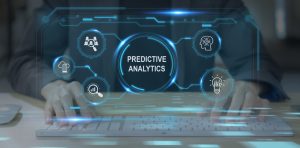How Different Members of Your Company Can Use Predictive Analytics
 As part of a business intelligence system, predictive analytics process historical data (such as customer buying trends, inventory performance, financial performance, and more). The system “learns” what happened in the past then creates a prediction model based on the likelihood that a certain event will occur down the road. The goal is to learn from past mistakes and successes so you know what to change, what to replicate, and what to expect from the future.
As part of a business intelligence system, predictive analytics process historical data (such as customer buying trends, inventory performance, financial performance, and more). The system “learns” what happened in the past then creates a prediction model based on the likelihood that a certain event will occur down the road. The goal is to learn from past mistakes and successes so you know what to change, what to replicate, and what to expect from the future.
For instance, predictive analytics might help you identify which inventory items are not only your top sellers, but also when they are most likely to turn the quickest. This can help you calculate safety stock to ensure your warehouse never runs out of product when you need it the most.
But predictive analytics is worth so much more than just keeping an eye on your inventory. Here are how different members of your company can use predictive analytics to do their job better:
Executives can use predictive intelligence analytics to influence their decisions made at all levels of the organization including strategic, operational and tactical. Executives have to see the “big picture” and know how to lead the company in the direction it needs to be taken. With data mined from predictive analytics the future of the company is left less to chance and more to educated planning.
Business managers can use predictive analytics to recognize which factors, both internal and external, are influencing outcomes (like sales numbers) and pinpoint issues holding their teams back and eventually drive improvements. For instance, predictive analytics can help identify when customers are most likely to make a purchase, giving sales and marketing teams a heads up when it’s time to make things happen.
Business analysts can leverage data from the BI system to build analytic models at the lowest levels of the business (for example, at the individual customer, product, campaign levels) and look for predictable behaviors, propensities, and business rules that can be used to predict the likelihood of certain behaviors and actions.
With predictive analytics, every department within your organization can make better decisions now and plan for the future. For instance, your finance team, seeing how budgets and revenue line up in the prediction models, can create better long-term plans that focus on intelligent growth and maximum profits with minimal costs. Your customer service department can reduce customer turnover and increase satisfaction and loyalty by better anticipating their needs so order fill rates, delivery due dates and other service levels remain high. The sales and marketing team can also benefit from predictive analytics, helping ensure their time and efforts are spent on the most profitable (and likely) scenarios and on generating the most accurate sales and demand forecasts possible by leveraging both current and past sales and marketing performance data.
At the bottom line, predictive analytics enable smarter and more strategic decision-making that validates business direction while driving competitive advantage.